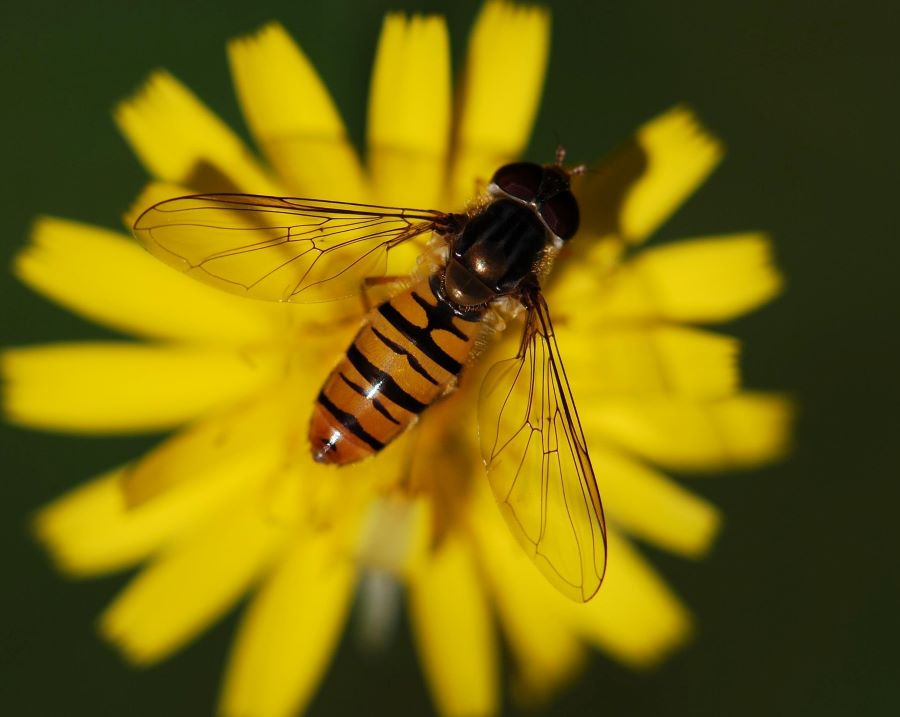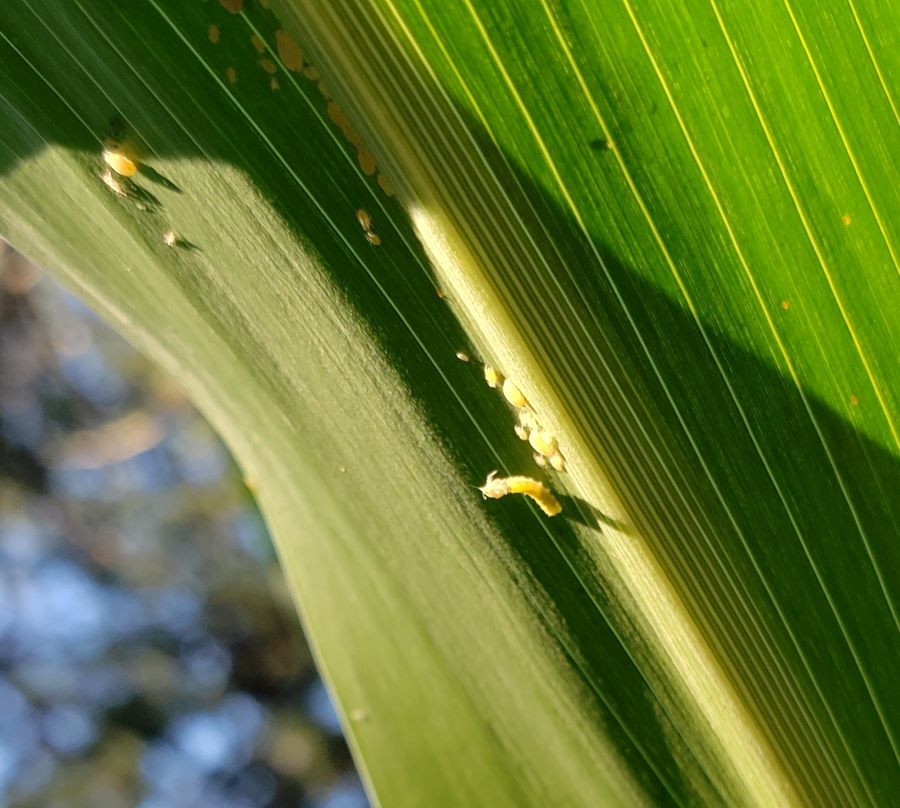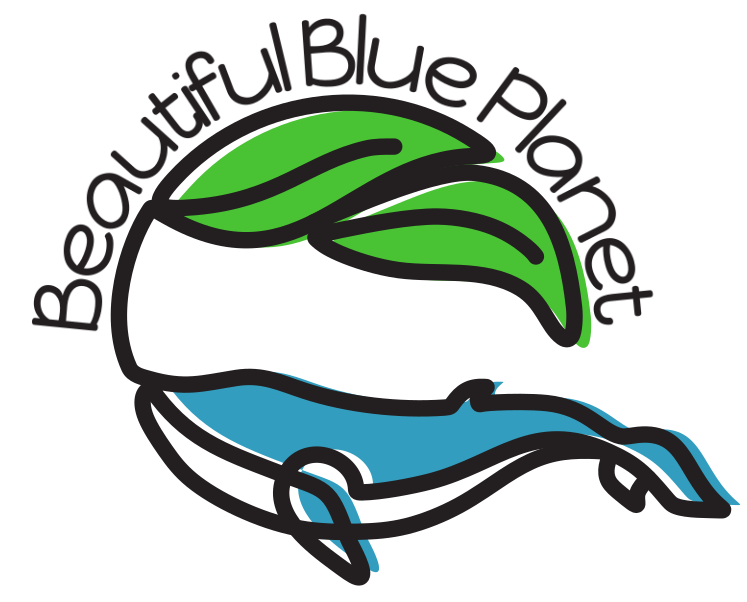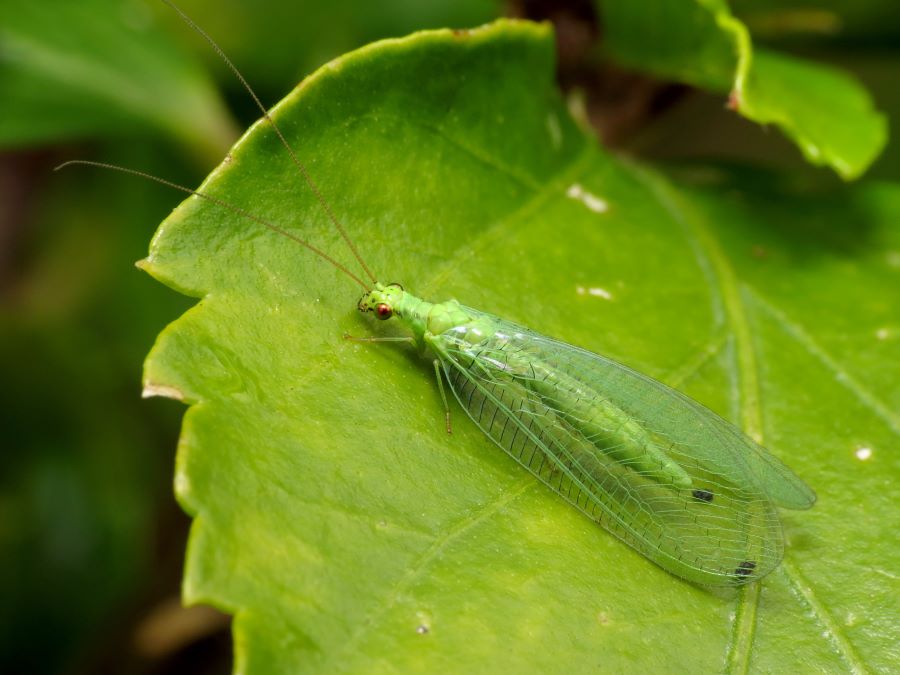When you have a pest insect infestation in your garden or landscape, there’s an army of predators ready to take them on. If you don’t kill them first.
These predators are called ‘beneficial insects’. And they need two things to survive in your garden.
Pest insects. And flowers.
Insect lives have four stages: egg, larva, pupa, and adult.
When a mother beneficial insect is ready to lay her eggs she looks for a pest insect infestation and lays them nearby, or in the pest insect. That way she knows her babies will easily find food, when they hatch.
The young babies start eating those pest insects and grow nice and big. Then they’re ready to pupate to turn into adults.
When the new adults emerge, their next task is to find flowers that will provide them with nectar and pollen so they’ll have the energy to mate. Then the females will find a place to lay their eggs.

Beneficial insects are carnivores
They eat insect ‘meat’, usually in their larval stage.
Depending on which carnivorous beneficial insect it is, the mother may lay her eggs on a leaf where there are pest insects feeding on leaves. Or they may lay their eggs in or on another insect, like an aphid or a caterpillar.
When the eggs are laid near a pest infestation, the hatched larvae crawl over to the pest insects and start eating them. Like a ladybug larva that devours aphids.
When the eggs are laid in a caterpillar, the hatched larvae eat the insides of the caterpillar, killing it. Like tiny tachinid flies devouring a tomato hornworm—from the inside. Then they pupate and emerge as adults.
Not all the beneficial insects operate the same way. Some eat other insects in their larval and their adult stage. Like the ladybug. And some need flowers at various times.
But most need pollen and/or nectar to complete their diet. And not just any flowers will do. Like how pollinators need certain flowers, the same is true for the beneficial insects. Which makes the beneficial insects pollinators, too! And many are nice cutting flowers. But first…

See who’s working for you in your garden
It takes some keen observation to find all these helpful bugs, but knowing what they look like gets you started. To see some of them, having a hand lens or a magnifying glass handy will help you see a new world in action in your garden. (Please beware of getting sun rays into your eye through the hand lens!)
Meet some of the beneficial insects:
Parasitic wasps (they don’t sting us, and some are very tiny)
Lacewings
Ladybugs
Beetles
Predatory Mites (they eat other mites)
True bugs
True flies (like hover flies)
Spiders (please get over this fear)
Mantids

Now, let’s see who’s eating your plants
These are the insects (and mollusks) that eat foliage, or roots: aphids, spider mites, scale, caterpillars, slugs and snails, thrips, grasshoppers, whiteflies, psyllids, pest beetles, mealy bugs, corn earworms, and more. (Please remember that caterpillars are moths and butterflies, and they’re important bird food!)
What happens when you kill the pests
When you spray with a pesticide, whether it’s a synthetic or a natural one, you also kill the beneficial insects that are present. And even though you kill the pests, any beneficials that remain are left without their food source. They do not procreate. And your landscape’s beneficial insect population declines and the pests that survive the spraying or that come in later have fewer enemies to keep them in check. The beneficials will need more time to catch up. So you have your pest cycle all over again. Which means more control and work for you, and so on. And there’s also the impact those measure have on pollinators.
But you can have your garden and landscape plants under full control of beneficial insects, avoid the trouble of spraying or using other pest control measures, and avoid harming the pollinators this whole planet needs for survival. Instead maintain a healthy population of the insects whose very job it is to consume populations of pest insects.
“Often very high percentages of scale populations will be parasitized, reducing what at first appeared to be a serious infestation to a very low population. Major outbreaks often follow treatment of tree with broad spectrum insecticides that kill natural enemies.” ~Mary Louise Flint, Integrated Pest Management Specialist, UC Davis*
Pest of the Garden and Small Farm, Mary Louise Flint, University of California, Div. of Agriculture and Natural Resources, 1990
How can you feel sure you can count on your beneficials
There are two things you need to do to let a beautiful, powerful process handle your pest control for you.
First, allow a pest population to build without you correcting it. Don’t panic. This will attract beneficial insects. And the method Mother Nature has devised to attract them is a process of gorgeous, amazing complexity!
You see, insects are receptive to scents that inform them and influence their behavior. When plants get eaten by pest insects, they send out scents that signal the situation and that attracts the right type of predator insect to the type of prey that’s on them. !!
In other words, the plant that’s getting eaten calls the right bugs for help with that problem. And it works.
So let the pests build a population, don’t panic, and the beneficials will come and clean it all up. There is a lag between the pest population and the hungry predator population. So patience is required!
The other thing you need to do is plant the flowers that feed the beneficials. This will boost their populations to give you quicker response.

What flowers are good for the beneficials?
Now you have a great excuse for having a flower garden! Some of these flowers are good as cutting flowers, and most are good for the pollinators, too. And as with the pollinators, different flowers have different ingredients in their nectar. Nectar isn’t all sugar water—not at all! It also has amino acids, lipids, stimulants, organic acids, proteins, and even microbes. You want a diversity of the right flowers; the best fed beneficials are the ones who can do more pest control and make the most babies.
Asters, Heliopsis, native buckwheat (Eriogonum species), annual buckwheat as a soil builder in annual garden beds, Boltonia, calamint, cilantro, cosmos, coreopsis, daisies, dill, Echinaceas, Erysimum (wallflower), elderberry, fennel, feverfew, goldenrod, mountain mint (Pycnanthemum), all oreganos, black-eyed susans, sweet alyssum, sunflowers, verbena, and yarrow are all good choices.
Fortify your garden with beneficial insects by planting a variety of flowers attractive to them. Like for pollinators, natives are a plus.
My experience with beneficials
I’ve had landscapes and gardens for decades and never had any pest problems. I’ve always had a variety of flowers just because I liked to grow them and cut them. Being an organic grower, I never would have sprayed anything.
The one time I felt I might need to resort to some kind of insecticide was when I noticed curling on the leaves of my Santa Rosa plum tree. It was spring. Looking closer at the underside of the leaves, I found a phenomenal number of aphids all sucking away in unison! Shocked, fear drove my thoughts into what non-toxic or even toxic poison should I use to stop this.
But I also noticed adult ladybugs, larval ladybugs, ladybug pupae, ladybug eggs, and soldier beetles. So I thought…I hope they can handle this infestation.
I had young children then and was quickly distracted. About two weeks later I went out to check on the plum tree. Not one single aphid. Clean as a whistle. The curled leaves were still curled, but they were getting buried in new growth.
This works. Let it work for you in your landscape.

Observe them, and have fun doing it!
Start looking for the beneficial insects in your garden. A flower like a cilantro, dill, or parsley flower attracts so many parasitic wasps. It’s fascinating to just sit in the garden and watch them flit around. Many of them are so tiny they’re barely visible. I guarantee they’ll be there.
See if you can find lacewings, hoverflies, and even ladybugs or their larvae on your flowers or near your aphids. And don’t forget the beetles in the soil are helping, too.
An exception to all this is when there’s a non-native invader pest species. Sometimes these need specific pesticide treatment.
Resources
For lots more information and details about this truly fascinating topic, read this book: Attracting Beneficial Bugs to Your Garden, by Jessica Walliser, Cool Springs Press, 2022
*Pests of the Garden and Small Farm, Mary Louise Flint, University of California, Div. of Agriculture and Natural Resources, 1990
Related Reading
You Can Help the Native Bees-They’re Our Best Pollinators

